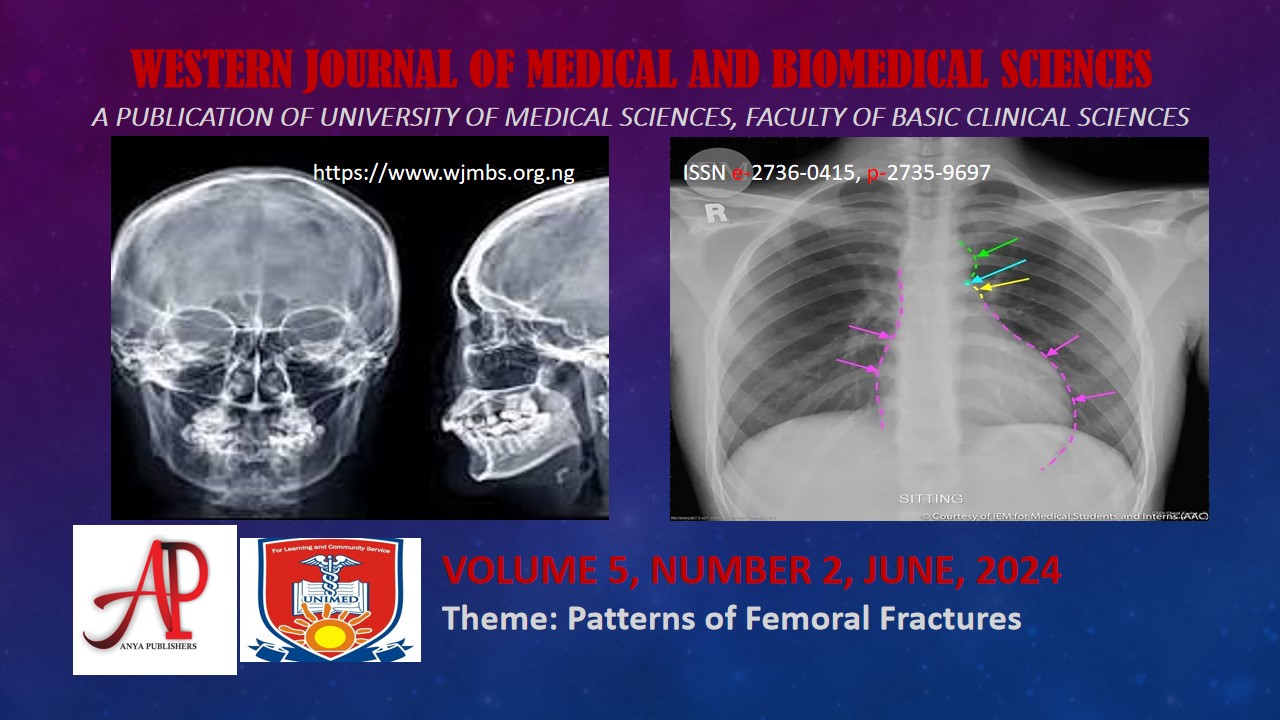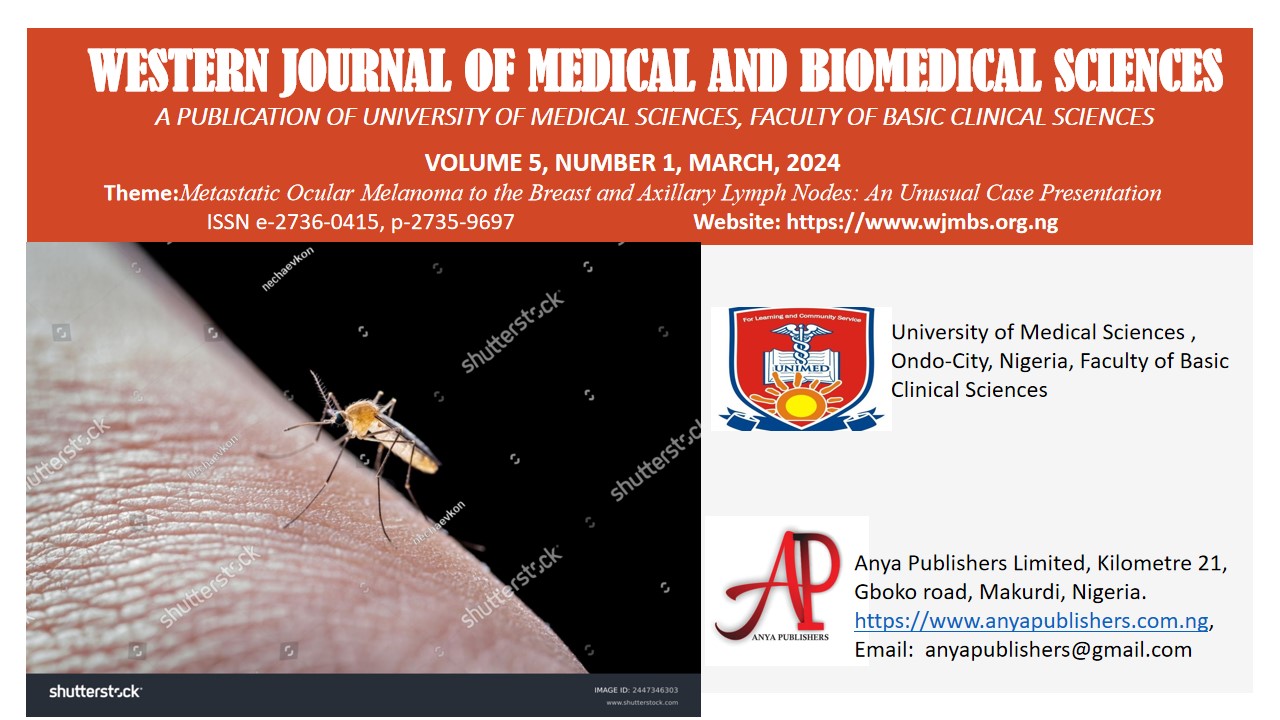Archives
-

Patterns of Femoral Fractures
Vol. 5 No. 2 (2024)Foreward
This Volume 5 number 2 goes with the title Patterns of Femoral fractures in which the authors looked at patterns of femoral fractures using X-ray among patients attending orthopaedic unit of Irrua Specialist and Teaching hospital in Edo state. They found that people aged 19 to 59 years were most commonly affected by femoral fracture and also that road traffic accidents were the commonest causes of the fractures. The authors therefore recommended upgrading of trauma facilities at the healthcare centre for proper management of such patients. A study to look into orofacial soft tissue sarcomas was carried out and the team of researchers observed that the prevalence among all orofacial biopsies, orofacial malignancies and orofacial sarcomas were 4.0%, 13.6%, and 76.6% respectively, and that fibrosarcoma and rhabdomyosarcoma were the most common malignancies. In another study, authors looked retrospectively at a study of 152 consecutive patients who had elective repair of groin hernias and found out that that community study was largely successful and should be encouraged in resource-constrained settings.
-

Cortical Tubers Without Neurological Symptoms: An Uncommon Case of Tuberous Sclerosis Complex
Vol. 6 No. 1 (2025)FOREWORD
The volume Six, Issue 17, number One, the first quarter issue of 2025 goes with the title “Cortical Tubers Without Neurological Symptoms: An Uncommon Case of Tuberous Sclerosis Complex”. The authors stressed that not all cases of Tuberous Sclerosis Complex (TSC) present with all the classical features as there are also phenotypic non-classical variants of the same disease. That it is a rare genetic neurocutaneous syndrome often characterized by presence of benign nodules in different parts of the body including brain. A thorough clinical and radiological examinations will help diligent physicians to identify non-classical phenotypic variants.
In another study researchers x-rayed Primary Health Care Under One Roof (PHCUOR) In Nigeria in retrospect in order to ascertain the successes and failures attained so far. And they came to the conclusion that the policy which is backed by law has failed to attained the desired impact due to myriad of challenges. Some of which include infrastructural constraints, inadequacy of staff to drive it, and unwillingness of the relevant health personnel to show understanding, work as a team to ensure its success.
Hydroxyurea has been reported to be effective in the management of patients with sickle cell disease and in this vein a team of researchers set out to evaluate the clinical and laboratory outcomes of children with SCA on hydroxyurea therapy. They found that Hydroxyurea therapy significantly reduced the frequency of vaso-occlusive crises (mean reduction from 7.70 to 1.91, p = .000), hospital admissions (mean reduction from 2.60 to 0.84, p = .000), and blood transfusions (mean reduction from 1.51 to 0.40, p = .005) along with significant hospital stay duration.
Professor Michael Simidele Odimayo
Editor-In-Chief
31st March, 2025



